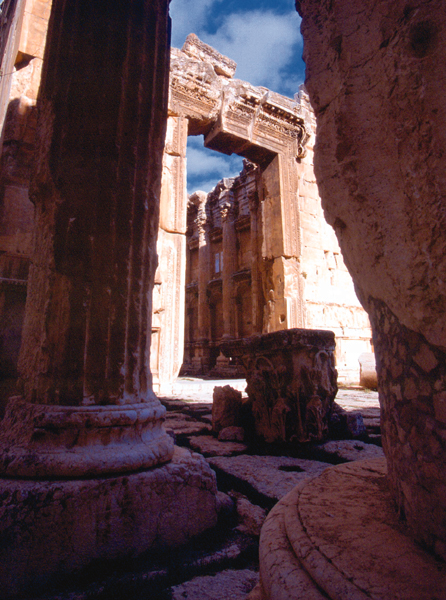Image Details

Bill Lyons
Two clues that a destruction was caused by earthquake: slipped keystones (shown here) and neat rows of fallen columns (see next photo).
The strength of arches and other entryways derives from the wedge-shaped keystone, which distributes weight down both sides of the entrance. During an earthquake, horizontal ground motion can cause the stones of the entrance to separate slightly and the keystone to slip. When the earth moves only slightly, the keystone is caught dangling in mid-air, as is the case with the massive keystone that hangs from the lintel of the entrance to a second-century A.D. Roman temple at Baalbek, in northeastern Lebanon.
